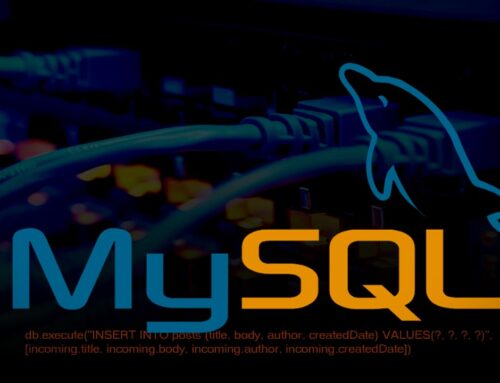Every business, regardless of size or industry, contends with the phenomenon known as operational drag. It can be considered the silent productivity killer, subtly eroding the efficiency of business processes, thus negatively impacting the bottom line. Understanding what operational drag is, its implications on your business, and strategies to effectively combat it can be the difference between growth and stagnation. This comprehensive guide is designed to arm you with that knowledge.
Throughout this article, we will explore the nature of operational drag, its manifestations, and various causes. We will then delve into the best methods to counteract it, drawing on expert opinions, cutting-edge research, and data-driven strategies. Real-life case studies will be presented, lending practical insights into how businesses like yours have overcome operational drag and reaped the rewards of optimized operations.
Best Methods for a Business to Deal with Operational Drag
Table of Contents
- Understanding Operational Drag
- Manifestations and Causes of Operational Drag
- Best Methods to Counteract Operational Drag
- Real-Life Case Studies
- Frequently Asked Questions
- Final Thoughts
- Sources
Understanding Operational Drag

Operational drag refers to the inefficiencies that slow down an organization’s processes and workflows, reducing its overall productivity and profitability. Like friction in a physical system, operational drag can subtly drain energy and momentum, making it more difficult for your business to achieve its goals.
In a business context, operational drag can take many forms, such as bureaucratic red tape, outdated or inefficient processes, poor communication, lack of employee engagement, and the absence of a culture of continuous improvement. If left unchecked, these inefficiencies can have a significant impact on a business’s bottom line, costing money, time, and resources that could be better used elsewhere.
Understanding operational drag involves analyzing your business’s operations to identify inefficiencies, determine their causes, and develop effective strategies to address them. Through this understanding, businesses can unlock significant potential for increased productivity and growth.
The operational drag your business experiences might be different from another business, as it is significantly influenced by the unique processes, systems, and culture within your organization. However, by looking closely at the most common causes and manifestations of operational drag, you can gain insights into how to identify and address it in your own operations.
1. Definition of Operational Drag
Operational drag in a business context is a term used to describe the inefficiencies that hamper an organization’s processes, creating slowdowns, redundancies, and waste. This metaphorical “drag” slows down the workflow, diminishes productivity, decreases profitability, and negatively impacts employee morale.
The concept borrows from physics, where drag is a force that opposes an object’s motion. Similarly, in a business setting, operational drag acts as a hindrance that prevents the smooth flow of operations, in turn delaying the realization of the organization’s strategic objectives.
This drag can stem from a variety of sources, such as outdated processes, unnecessary bureaucracy, inefficient resource allocation, poor communication, and technology gaps. For example, an overly complex approval process could slow down decision-making, while outdated software could reduce productivity.
Importantly, operational drag isn’t always visible or easily quantifiable, but its effects are usually apparent in reduced efficiency and output. This elusive characteristic makes it crucial for businesses to continually monitor and assess their processes and systems, to identify and rectify areas of operational drag.
To sum up, operational drag acts as a roadblock to optimal business performance. It’s a pervasive issue that, if left unaddressed, can significantly affect a company’s bottom line. Therefore, understanding operational drag and knowing how to mitigate it is crucial for enhancing organizational efficiency and competitiveness.
2. Impacts of Operational Drag
Operational drag can have widespread and profound impacts on a business, affecting its efficiency, productivity, profitability, and even employee satisfaction. Let’s delve into each of these impacts in more detail:
- Efficiency: Operational drag leads to inefficiencies in business processes, reducing the overall speed and effectiveness of operations. For instance, if there are unnecessary approval processes or duplicated efforts in a workflow, tasks will take longer to complete than they should. This can significantly slow down operations, preventing the business from achieving its full potential.
- Productivity: Operational drag negatively impacts productivity, as it can result in employees spending time on non-value-added tasks, such as unnecessary paperwork or repetitive tasks that could be automated. According to a study conducted by Harvard Business Review, US companies lose more than 20% of their productive capacity—that’s more than a day each week—to organizational drag.
- Profitability: Operational drag can erode a company’s profitability. It not only increases operational costs due to inefficiencies but also reduces revenue potential by slowing down production and service delivery. For example, if a manufacturing company’s production line is slowed down by operational drag, it could lead to missed sales opportunities, negatively affecting the bottom line.
- Employee Satisfaction: Employees thrive in environments where they can do their best work. However, operational drag can lead to frustration and low morale among employees, as they might feel their time and skills are not being utilized effectively. This could result in reduced employee satisfaction and higher turnover rates, which can further impact productivity and increase recruitment costs.
- Innovation: Operational drag can stifle innovation within an organization. If employees are bogged down by inefficiencies and bureaucratic processes, they have less time and energy to spend on creative thinking and innovation. This can limit a company’s ability to innovate and stay competitive in its industry.
In sum, the impact of operational drag is far-reaching, affecting not only the company’s operations and financial performance but also its workforce and capacity for innovation. Therefore, businesses should make it a priority to identify and mitigate operational drag to ensure their long-term success and sustainability.
3. Identifying Operational Drag in Your Business
Identifying operational drag within your business is the first step in addressing and mitigating its impacts. While operational drag can be elusive, certain signs indicate its presence. Here are some key strategies to help you pinpoint areas of operational drag in your organization:
- Process Analysis: This involves a detailed examination of your current processes to identify areas of inefficiency, waste, and redundancy. Techniques such as value stream mapping or process mapping can be highly effective in visualizing the flow of tasks and identifying bottlenecks, delays, or unnecessary steps in your processes.
- Benchmarking: Comparing your performance against industry standards or similar businesses can help identify areas where you might be lagging. If your processes are slower or less efficient than those of your competitors, there may be operational drag at play.
- Feedback from Employees: Your employees are the ones who experience the impacts of operational drag first-hand. Regularly engaging them in open dialogues or conducting surveys can uncover areas of frustration, inefficiency, or unnecessary complexity.
- Customer Feedback: Customer feedback can also be a valuable source of insight into operational drag. Complaints about slow service, frequent errors, or complex procedures can all indicate inefficiencies in your operations.
- Performance Metrics: Metrics such as cycle times, error rates, customer satisfaction scores, and productivity rates can all point to operational drag. If these metrics are declining or not meeting targets, it’s likely that operational drag is a contributing factor.
- Technology Audit: An audit of your technology can reveal outdated systems or software that is slowing down your operations. For example, if your IT systems frequently crash or your software isn’t integrated, these can be signs of operational drag.
Remember, operational drag can creep into any part of an organization, from high-level strategic planning down to the smallest operational processes. Regular monitoring and assessment of your processes, performance, technology, and feedback from employees and customers are essential in identifying and addressing operational drag promptly.
4. Common Causes of Operational Drag
While operational drag can stem from various sources, there are common causes that many businesses encounter. Understanding these common causes can help businesses identify areas of concern in their own operations. Here are some of the most prevalent:
- Outdated Processes: Processes that were effective in the past may not be suitable in the present due to changes in technology, market dynamics, or business strategy. These outdated processes can become a source of operational drag, slowing down operations and creating inefficiencies.
- Bureaucracy: Excessive bureaucracy, such as unnecessary approval processes, can slow down decision-making and reduce agility. While some level of bureaucracy is necessary for control and coordination, too much can lead to operational drag.
- Poor Communication: Inefficient communication can result in misunderstandings, delays, and errors. These communication gaps can be particularly prevalent in larger organizations where information needs to pass through multiple levels or departments.
- Lack of Standardization: Without standardized processes, there can be variations in how tasks are performed, leading to inconsistencies, errors, and inefficiencies.
- Inadequate Training: If employees aren’t properly trained, they may not be able to perform their tasks efficiently or utilize tools and systems effectively. This can result in slower operations and higher error rates.
- Lack of Automation: In today’s digital age, failing to automate repetitive, manual tasks can be a significant source of operational drag. Automation not only increases speed and accuracy but also frees up employees to focus on higher-value tasks.
- Ineffective Use of Technology: While technology can be a powerful tool for improving efficiency, it can also be a source of operational drag if not used effectively. For example, outdated or poorly integrated systems can slow down operations and create extra work for employees.
- Lack of Continuous Improvement Culture: If a business isn’t continually seeking to improve its operations, inefficiencies can go unnoticed and unaddressed, leading to operational drag. A culture of continuous improvement encourages constant assessment and optimization of processes.
These are just some of the common causes of operational drag. It’s important for businesses to be vigilant and proactive in identifying and addressing these and other sources of operational drag in their operations.
Manifestations and Causes of Operational Drag

Operational drag can be as evident as a traffic jam during rush hour or as subtle as the creeping spread of moss on a stone. However, its impact on productivity and efficiency is often substantial. Identifying its manifestations and understanding the root causes are the initial steps in combating operational drag effectively.
1. Common Manifestations of Operational Drag
Operational drag, while often intangible and difficult to quantify, manifests in ways that affect the performance and overall health of an organization. Recognizing these symptoms can alert a company to the presence of operational drag and encourage the pursuit of solutions. Some common manifestations include:
- Decreased Productivity: A drop in output, an increase in the time taken to complete tasks, or lower efficiency rates can all indicate the presence of operational drag.
- Increased Costs: Higher operational costs due to inefficiencies, waste, and redundancies are often signs of operational drag. This might show up as higher overhead costs, increased expenditure on resources, or more time spent on non-value-added activities.
- Customer Complaints: Increased customer complaints about service quality, delivery times, or errors could be a manifestation of operational drag. A decline in customer satisfaction scores could also indicate an issue.
- Employee Frustration: If employees frequently express frustration about bureaucracy, convoluted processes, or outdated tools and technology, it could be a sign that operational drag is hampering their work.
- High Employee Turnover: High rates of employee turnover can be another symptom of operational drag. If employees are frustrated with the inefficiencies and roadblocks they face, they may choose to leave the organization.
- Missed Deadlines: Regularly missed deadlines can be a clear sign of operational drag. If projects or tasks consistently take longer than expected, there could be inefficiencies slowing things down.
- Poor Quality of Work: If the quality of work or services provided begins to decline, this could be due to operational drag. Inefficient processes and frustrated employees can lead to errors and a drop in the overall quality of output.
- Decrease in Sales or Profitability: Ultimately, operational drag can lead to a decline in sales or profitability. Inefficiencies and slow processes can result in lost opportunities and reduced competitive advantage.
By keeping an eye out for these symptoms, companies can identify operational drag in its early stages and take action to mitigate its impact before it significantly affects the business’s bottom line.
2. Underlying Causes of Operational Drag
Operational drag can arise from a variety of underlying causes, many of which are interconnected. Understanding these deeper root causes can help businesses more effectively address and prevent operational drag. Here are some of the primary underlying causes:
- Organizational Complexity: As organizations grow and expand, they often become more complex. This complexity can lead to increased bureaucracy, siloed departments, and convoluted processes, all of which contribute to operational drag.
- Resistance to Change: Organizations that resist change and cling to outdated processes, systems, or ways of thinking can easily fall victim to operational drag. In today’s rapidly evolving business environment, adaptability is key to maintaining efficiency and staying competitive.
- Lack of Strategic Alignment: Operational drag can also stem from a lack of alignment between a company’s strategy and its operations. When operations aren’t aligned with strategic goals, inefficiencies can arise, and resources may be misallocated.
- Inadequate Leadership: Leadership plays a crucial role in setting the direction, fostering a culture of continuous improvement, and ensuring efficient communication. Ineffective leadership can lead to confusion, poor decision-making, and a lack of accountability, all of which contribute to operational drag.
- Poor Workforce Management: Operational drag can also result from ineffective workforce management. This can include inadequate training, poor task allocation, or a lack of motivation among employees.
- Inefficient Use of Technology: While technology can be a powerful tool for efficiency, it can also contribute to operational drag if not properly implemented or used. This includes using outdated technology, failing to integrate systems, or not providing adequate training for employees to use technology effectively.
Understanding these underlying causes is essential for any organization seeking to reduce operational drag. By addressing these deeper issues, companies can not only mitigate existing operational drag but also prevent future inefficiencies from arising.
2.1 Overly Bureaucratic Processes
Overly bureaucratic processes represent one of the most common causes of operational drag in many organizations. While bureaucracy is necessary to some extent in organizations to maintain order, structure, and control, excessive bureaucracy can slow down decision-making, hinder agility, and result in considerable inefficiencies.
Here are some manifestations of overly bureaucratic processes:
- Multiple layers of approval: Unnecessary layers of approval can significantly slow down the decision-making process. When a decision must pass through multiple layers of management, it can take considerably longer to implement changes or new initiatives. This not only wastes valuable time but can also hinder a company’s ability to respond swiftly to changes in the market.
- Red Tape: Excessive rules, regulations, and paperwork can bog down operations. They often add little value and can frustrate employees who have to deal with this red tape. In particular, employees might feel that they are spending too much time on administrative tasks rather than on tasks that contribute to the company’s objectives.
- Siloed Departments: In overly bureaucratic organizations, departments often work in silos, with little communication or collaboration between them. This lack of integration can result in duplicated efforts, inconsistent approaches, and missed opportunities for synergies.
- Resistance to Change: Bureaucratic organizations often resist change, sticking to traditional ways of doing things even when they are no longer efficient or effective. This resistance can prevent organizations from innovating, adapting to market changes, and improving their processes.
- Lack of Empowerment: In an overly bureaucratic environment, employees often lack the empowerment to make decisions or suggest improvements. This can stifle innovation, reduce employee satisfaction, and slow down operations.
Addressing these overly bureaucratic processes is essential to reduce operational drag. This could involve streamlining approval processes, reducing red tape, encouraging cross-departmental collaboration, fostering a culture of change and continuous improvement, and empowering employees to make decisions and contribute ideas. By doing so, organizations can significantly enhance their efficiency and agility.
2.2 Outdated Technology
In the age of digital transformation, outdated technology is a significant contributor to operational drag. While technology advancements present immense opportunities for enhancing productivity and efficiency, businesses that fail to keep up can find themselves struggling with inefficiencies and challenges. Here’s how outdated technology can cause operational drag:
- Decreased Efficiency and Productivity: Outdated technology can lead to slower processes and decreased productivity. For example, older software versions may lack features that streamline tasks, or older hardware may not perform as quickly as newer models, leading to delays.
- Integration Issues: As new tools and platforms are introduced, outdated technology may not integrate well with them, resulting in disjointed systems. This can lead to redundant data entry, difficulty accessing necessary information, and an increased likelihood of errors.
- Security Vulnerabilities: Outdated technology often lacks the security features present in newer systems. This exposes the business to greater risk of cyber attacks, which can disrupt operations and result in substantial recovery costs.
- Higher Maintenance Costs: Maintaining and troubleshooting outdated technology can be costly and time-consuming. Moreover, as technology ages, parts can become difficult to obtain, and finding personnel skilled in older technology can also be a challenge.
- Inability to Leverage New Technologies: Innovations like artificial intelligence (AI), machine learning, and cloud computing can revolutionize business processes, offering increased efficiency, flexibility, and insights. Outdated technology can prevent companies from harnessing the power of these innovations, leaving them lagging behind competitors.
- Employee Dissatisfaction: Using outdated technology can frustrate employees, decreasing their job satisfaction and productivity. In some cases, it could also make it more difficult to attract and retain tech-savvy employees.
To overcome the drag caused by outdated technology, businesses should conduct regular technology audits, invest in regular updates and upgrades, and consider a move to cloud-based systems where appropriate. By staying up-to-date with technology trends and continuously integrating new and efficient technologies, businesses can drastically reduce operational drag, increase security, and boost their competitive advantage.
2.3 Lack of Skilled Workforce
A lack of a skilled workforce can significantly contribute to operational drag. The absence of necessary skills and expertise can lead to inefficiencies, errors, and slower processes. Here are the ways in which a skill deficit can cause operational drag:
- Inefficient Task Completion: When employees lack the necessary skills or knowledge, they may take longer to complete tasks or make mistakes that need to be corrected, leading to inefficiencies.
- Reduced Quality of Work: A lack of skilled employees can also impact the quality of work produced. This can result in customer dissatisfaction, reputational damage, and the need for rework, all of which contribute to operational drag.
- Increased Training Costs: If a business frequently needs to train its workforce due to skills gaps, this can result in higher costs and a diversion of resources from other areas of the business.
- Low Employee Morale: Employees who feel they lack the skills to perform their jobs effectively can experience low morale, which can affect productivity and lead to higher turnover rates.
- Inability to Innovate: Without the right skills, businesses may find it difficult to innovate, adapt to change, or leverage new technologies, resulting in stagnant processes and the persistence of outdated practices.
To combat the operational drag caused by a lack of skilled workforce, businesses should invest in regular training and development programs, promote a culture of continuous learning, and consider employing a diverse range of talent. By ensuring that employees have the necessary skills and that these skills are regularly updated, businesses can increase efficiency, improve the quality of work, and foster a more innovative and adaptable workforce.
3. Effect of Organizational Culture on Operational Drag
Organizational culture, or the shared values, beliefs, and norms within a company, has a profound impact on operational efficiency. The right culture can drive productivity and efficiency, while the wrong culture can result in significant operational drag. Here’s how various aspects of organizational culture affect operational drag:
- Resistance to Change: Organizations with a culture that resists change often struggle with inefficiencies. This resistance can lead to outdated processes being maintained, and it can discourage innovation and the adoption of new technologies.
- Lack of Accountability: A culture that lacks accountability can contribute to operational drag. If employees don’t feel responsible for their work or its outcomes, there can be delays, mistakes, and a lack of initiative, all of which result in inefficiencies.
- Poor Communication: Cultures that don’t value open and efficient communication often suffer from miscommunication and misunderstandings. This can lead to errors, rework, and a lack of coordination, contributing to operational drag.
- Lack of Empowerment: In cultures where employees are not empowered to make decisions, problem-solve, or suggest improvements, there can be delays and inefficiencies. Empowered employees are often more engaged and productive.
- Absence of Continuous Improvement: Cultures that don’t value continuous improvement often fall into patterns of complacency. This can result in inefficiencies going unnoticed or unaddressed, leading to ongoing operational drag.
- Ineffective Leadership: Leadership plays a significant role in shaping culture. Ineffective leaders can foster cultures that encourage bureaucracy, discourage innovation, and fail to inspire accountability.
To minimize operational drag, businesses should strive to foster a culture that values change, accountability, open communication, empowerment, and continuous improvement. Strong, effective leadership is critical in cultivating such a culture. By shaping a positive organizational culture, businesses can reduce operational drag and foster an environment that supports efficiency, growth, and success.
Best Methods to Counteract Operational Drag

Knowing how to counteract operational drag is essential for any organization. Several methods can help businesses address operational drag effectively, and adopting a combination of these strategies can lead to significant improvements in productivity and efficiency.
1. Process Optimization
Process optimization involves reviewing, analyzing, and improving current business processes to enhance efficiency, improve quality, reduce errors, and drive better outcomes. It’s a crucial strategy in reducing operational drag. Here’s how to approach process optimization:
- Process Mapping: This involves creating a visual representation of the existing process, which can help identify inefficiencies, bottlenecks, redundancies, or unnecessary steps. Tools like flowcharts or process maps can be used.
- Analysis and Benchmarking: Once the process is mapped, it can be analyzed to understand where improvements can be made. Benchmarking, or comparing the process to industry best practices or standards, can provide a useful point of reference.
- Identify Opportunities for Improvement: Look for steps that can be eliminated, automated, simplified, or redesigned for better efficiency. Also, identify areas where errors occur frequently or where delays are common.
- Implement Changes: After identifying opportunities for improvement, implement these changes. This might involve adopting new technologies, retraining staff, or reorganizing tasks.
- Monitor and Review: After changes have been implemented, monitor the process closely to ensure the changes have the desired effect. Regularly review and adjust as necessary.
Process optimization can have significant benefits, including reduced operational costs, improved productivity, higher quality outputs, and improved customer satisfaction. However, it requires a commitment to continuous improvement and the willingness to change established ways of doing things. By optimizing processes, businesses can significantly reduce operational drag and create a more efficient and effective organization.
1.1 Lean Six Sigma
Lean Six Sigma is a methodology that combines the principles of Lean and Six Sigma to improve process efficiency and quality. It aims to eliminate waste and reduce variation in processes, making it a highly effective tool for combating operational drag. Here’s how it works:
- Define: Clearly articulate the problem, the process that needs improvement, and the project objectives. This could be done using tools like a project charter or a problem statement.
- Measure: Collect data on the current process to establish a baseline. This could involve tracking process times, error rates, costs, or any other relevant metric.
- Analyze: Use the data collected to identify the cause of inefficiencies or quality issues. This might involve tools such as root cause analysis or process flow diagrams.
- Improve: Develop and implement solutions to address the issues identified. This could involve redesigning the process, implementing new technology, or changing how tasks are allocated.
- Control: Monitor the process to ensure that improvements are sustained over time. This could involve creating control charts, conducting regular audits, or setting up regular reviews.
Lean Six Sigma can be highly effective in reducing operational drag. By focusing on eliminating waste (the Lean aspect) and reducing variation (the Six Sigma aspect), it can help create more efficient, consistent, and high-quality processes. However, it requires a commitment to data-driven decision making and continuous improvement, and may also require training or external expertise to implement effectively.
1.2 Business Process Reengineering
Business Process Reengineering (BPR) is a strategic approach to improving business efficiency and effectiveness by fundamentally rethinking and redesigning business processes. Unlike incremental improvement approaches, BPR advocates for radical change, which can lead to dramatic improvements in performance. Here’s how it works:
- Identify Processes: Determine which processes need to be reengineered. These might be processes that are especially inefficient, costly, or critical to the business.
- Analyze Current Processes: Understand the current state of the processes, including their structure, participants, costs, and outcomes. Tools like process maps or flowcharts can be useful here.
- Envision New Processes: Imagine how the processes could be redesigned to achieve dramatic improvements. This could involve eliminating unnecessary steps, changing the order of tasks, adopting new technology, or changing roles and responsibilities.
- Implement Changes: Put the new processes into practice. This could involve training staff, updating systems, and communicating changes to all relevant stakeholders.
- Review and Refine: Monitor the new processes to ensure they’re achieving the desired outcomes. Refine and adjust as necessary.
BPR can result in significant improvements in efficiency, effectiveness, and customer satisfaction. However, it can also be disruptive and requires a strong commitment to change. Furthermore, it may require substantial investments in time and resources. Despite these challenges, when executed correctly, BPR can drastically reduce operational drag and transform the way a business operates.
2. Automation
Automation is a powerful tool in reducing operational drag by replacing manual tasks with automated ones, using technology such as software, machines, or robotics. It helps reduce human errors, increases speed, and frees up employee time for higher-value tasks. Here’s how to approach automation:
- Identify Automatable Tasks: Start by identifying tasks that are repetitive, rule-based, and require little human judgment. These are the tasks that are most easily and effectively automated.
- Choose the Right Tools: There are many automation tools available, ranging from Robotic Process Automation (RPA) tools that can mimic human actions, to more advanced AI and machine learning technologies that can handle complex tasks. Choose the tool that best fits your needs, budget, and technical capabilities.
- Implement the Automation: This might involve configuring the automation tool, integrating it with your existing systems, and testing it to ensure it works correctly.
- Monitor and Adjust: Once the automation is implemented, monitor its performance to ensure it’s delivering the expected benefits. Be prepared to adjust or refine the automation as needed.
- Upskill Employees: Automation can lead to job displacement, so it’s important to reskill or upskill employees to handle more complex, creative, or strategic tasks that can’t be automated.
Automation can deliver significant benefits, including increased efficiency, reduced errors, cost savings, and improved scalability. However, it’s important to manage it carefully to avoid potential pitfalls, such as over-automation, which can create new inefficiencies or vulnerabilities. With a thoughtful approach, automation can significantly reduce operational drag and enhance business performance.
2.1 Robotic Process Automation (RPA)
Robotic Process Automation (RPA) is a form of business process automation that uses software robots or “bots” to automate routine, rule-based tasks. By mimicking human actions in digital systems, RPA can perform tasks such as data entry, processing transactions, or sending communications.
Here’s how RPA can be used to reduce operational drag:
- Increase Efficiency: RPA bots can work 24/7 without breaks, drastically reducing the time taken to complete tasks. They can also perform tasks faster than humans and without errors, further increasing efficiency.
- Reduce Costs: By automating routine tasks, businesses can reduce labor costs. Furthermore, because RPA bots are software-based, they can be more cost-effective to deploy and maintain than physical robots.
- Improve Accuracy: RPA bots follow the rules precisely and consistently, reducing the chance of errors that can result from human mistakes or oversight.
- Increase Scalability: RPA allows businesses to scale up or down their operations quickly in response to demand changes. It’s also possible to deploy more bots to manage increased workload during peak times.
- Free Up Human Resources: By taking over mundane and repetitive tasks, RPA frees up employees to focus on higher-value tasks, such as strategic planning, problem-solving, or customer service.
To implement RPA, businesses need to identify suitable tasks for automation, choose the right RPA tool, configure and deploy the bots, and monitor and adjust their performance. While RPA can deliver significant benefits, it’s important to manage potential challenges, such as ensuring the bots are properly programmed and controlled, and managing the impact on employees. With careful management, RPA can be a powerful tool for reducing operational drag.
2.2 AI and Machine Learning
Artificial Intelligence (AI) and Machine Learning (ML) are advanced technologies that can help reduce operational drag by automating complex tasks, improving decision making, and uncovering insights from data. Here’s how they can help:
- Advanced Automation: AI and ML can automate tasks that require human-like capabilities, such as understanding natural language, recognizing images, or making predictions based on data. This goes beyond what traditional automation or RPA can do.
- Improved Decision Making: AI can analyze large amounts of data to provide insights or recommendations, aiding in decision-making. This can help businesses make more informed, data-driven decisions.
- Predictive Analysis: ML, a subset of AI, involves algorithms that can learn from data and make predictions. This can help businesses forecast demand, predict trends, or identify potential issues before they occur.
- Personalization: AI can help businesses personalize their offerings or interactions based on individual customer data, improving customer satisfaction and retention.
- Process Optimization: AI and ML can analyze process data to identify inefficiencies or opportunities for improvement. This can help businesses optimize their operations and reduce drag.
Implementing AI and ML requires a significant investment in technology and skills. Businesses may need to hire or train staff to develop and manage AI/ML systems, or they could use pre-built solutions from vendors. It’s also important to manage the ethical and privacy implications of using these technologies. Despite these challenges, AI and ML can offer significant benefits in reducing operational drag and enhancing business performance.
3. Employee Engagement
Employee engagement is the emotional commitment and involvement an employee has towards their work and their organization’s goals. High levels of employee engagement lead to improved productivity, lower turnover, and higher customer satisfaction – all of which contribute to reducing operational drag. Here’s how to foster employee engagement:
- Clear Communication: Communicate business goals, expectations, and changes clearly and regularly. Employees who understand their role in achieving business objectives are likely to be more engaged.
- Recognition and Reward: Recognize and reward employees for their efforts. This could be through formal reward programs, or through simple acts of acknowledgement and appreciation.
- Opportunities for Growth: Provide opportunities for employees to develop their skills and advance their careers. This could be through training, mentoring, or opportunities to take on new challenges.
- Empowerment: Empower employees to make decisions, suggest improvements, and take ownership of their work. This can increase their sense of autonomy and engagement.
- Work-Life Balance: Support a healthy work-life balance. This could involve flexible working arrangements, support for mental health, or encouraging regular breaks.
- Fostering a Positive Culture: A positive, inclusive, and supportive culture can significantly enhance employee engagement. This involves cultivating strong relationships, promoting teamwork, and addressing any negative behaviors or practices.
Improving employee engagement requires commitment from all levels of the organization, particularly from leadership. It’s also important to measure engagement regularly, such as through surveys or feedback, and to take action on the results. By focusing on employee engagement, businesses can not only reduce operational drag but also enhance their overall performance and success.
3.1 Employee Training and Development
Employee training and development is a critical part of improving employee engagement and reducing operational drag. Skilled and knowledgeable employees are more efficient, make fewer mistakes, and can contribute more effectively to business goals. Here’s how to approach employee training and development:
- Needs Assessment: Identify the skills and knowledge that employees need to perform their jobs effectively, and the gaps that exist. This could involve reviewing job descriptions, performance evaluations, or business goals.
- Training Design: Design training programs that address these gaps. This could involve a variety of methods, such as workshops, e-learning, on-the-job training, or mentoring. The design should consider adult learning principles and diverse learning styles.
- Delivery: Deliver the training in a way that’s engaging, practical, and accessible. This could involve using interactive elements, real-world examples, and flexible delivery methods.
- Evaluation: Evaluate the effectiveness of the training. This could involve measuring changes in knowledge or skills, seeking feedback from participants, or observing changes in job performance.
- Continual Learning: Encourage a culture of continual learning. This could involve providing ongoing learning opportunities, recognizing learning achievements, and integrating learning into everyday work.
Investing in employee training and development can deliver significant benefits. It can improve performance, increase employee engagement, and enhance the organization’s ability to achieve its goals. However, it requires a commitment of time and resources, and a supportive learning environment. With these elements in place, training and development can be a powerful tool for reducing operational drag.
3.2 Motivation and Reward Systems
Motivation and reward systems play a critical role in enhancing employee engagement, which subsequently helps to mitigate operational drag. A well-designed reward system can motivate employees to perform optimally, align their efforts with business objectives, and cultivate a high-performance culture. Here’s how to approach the creation of effective motivation and reward systems:
- Align Rewards with Business Goals: Ensure that your reward system encourages behaviors that support your business objectives. For instance, if innovation is a key business goal, consider rewards for employees who contribute innovative ideas or solutions.
- Offer a Mix of Rewards: Use a mix of financial and non-financial rewards. While financial rewards such as bonuses or salary increases are important, non-financial rewards such as recognition, career development opportunities, or improved work-life balance can also be highly motivating.
- Make it Fair and Transparent: Ensure that your reward system is perceived as fair and transparent. Employees need to understand what they need to do to earn rewards, and believe that rewards are distributed fairly.
- Personalize Rewards: Try to tailor rewards to individual preferences and needs as much as possible. This could involve offering a menu of rewards for employees to choose from, or seeking input from employees on reward options.
- Regularly Review and Update: Regularly review and update your reward system to ensure it remains effective and relevant. This could involve seeking feedback from employees, monitoring the impact of rewards on performance, or keeping up-to-date with reward trends in your industry.
A well-designed motivation and reward system can boost employee engagement, increase job satisfaction, and improve performance – all of which help to reduce operational drag. However, designing such a system can be complex and requires careful thought and ongoing management. But with careful planning and implementation, motivation and reward systems can be a highly effective tool for reducing operational drag.
4. Continual Improvement and Innovation
Continual improvement and innovation are critical for any organization aiming to reduce operational drag and enhance efficiency. This involves constantly examining current processes, technologies, and practices, identifying areas for improvement, and implementing changes for better results. Here’s how you can foster an environment of continual improvement and innovation:
- Encourage Open Communication: Foster a culture where employees feel comfortable sharing their ideas and feedback. Regular meetings, suggestion boxes, or online forums can be useful channels for this.
- Implement Regular Reviews: Regularly review your business operations to identify inefficiencies or areas for improvement. This could involve performance reviews, process audits, customer feedback, or competitor analysis.
- Adopt Improvement Methodologies: Use proven methodologies for process improvement, such as Lean, Six Sigma, or Kaizen. These can provide a structured approach to identifying and implementing improvements.
- Invest in Innovation: Encourage and invest in innovation, such as new technologies, business models, or ways of working. This could involve having a dedicated innovation budget, running innovation contests, or partnering with external innovators.
- Reward Improvement and Innovation: Recognize and reward employees who contribute to improvement and innovation. This could involve financial rewards, public recognition, or career development opportunities.
- Learn from Mistakes: Foster a culture where mistakes are seen as opportunities for learning and improvement, rather than something to be punished. This can encourage employees to take risks and try new things.
- Implement Changes: Once improvements or innovations have been identified, implement them promptly and monitor their impact. Be prepared to make further adjustments as needed.
Promoting continual improvement and innovation can lead to significant benefits, including increased efficiency, reduced costs, improved quality, and enhanced competitiveness. However, it requires a supportive culture, dedicated resources, and strong leadership. By prioritizing continual improvement and innovation, businesses can reduce operational drag and position themselves for long-term success.
4.1 Embracing a Culture of Innovation
Creating a culture of innovation is essential for reducing operational drag and driving continuous improvement within an organization. It involves fostering an environment that encourages and supports creativity, experimentation, and the pursuit of new ideas. Here’s how to embrace a culture of innovation:
- Promote Psychological Safety: Create a safe environment where employees feel comfortable taking risks, sharing ideas, and challenging the status quo without fear of negative consequences. This encourages open dialogue and the exploration of new possibilities.
- Encourage Collaboration: Foster a collaborative culture where employees from diverse backgrounds and disciplines can come together to exchange ideas and collaborate on projects. This cross-pollination of ideas often leads to innovative solutions.
- Empower Employees: Empower employees to take ownership of their work and provide them with the autonomy to make decisions and implement their ideas. This sense of ownership fosters a greater sense of accountability and encourages innovative thinking.
- Provide Resources and Support: Allocate resources, both financial and non-financial, to support innovation initiatives. This could include dedicated innovation budgets, access to technology or research, and training programs to develop creative thinking skills.
- Celebrate and Recognize Innovation: Acknowledge and celebrate innovative ideas, projects, and individuals who contribute to innovation within the organization. Recognize their efforts through rewards, incentives, or public recognition to inspire others.
- Promote Learning and Curiosity: Encourage a culture of continuous learning and curiosity. Provide opportunities for employees to attend workshops, conferences, or training programs to expand their knowledge and keep up with industry trends.
- Lead by Example: Leadership plays a crucial role in setting the tone for innovation. Leaders should demonstrate a willingness to embrace new ideas, take calculated risks, and support innovative initiatives.
- Iterate and Learn from Failure: Embrace failure as a learning opportunity. Encourage employees to experiment, iterate, and learn from mistakes to drive continuous improvement.
By embracing a culture of innovation, organizations can unlock the full potential of their employees, drive creativity, and stay ahead of the competition. It allows for the identification and elimination of operational drag, fosters a spirit of continuous improvement, and enables organizations to adapt to changing market dynamics effectively.
4.2 Implementing Continuous Improvement Models
Implementing continuous improvement models provides a structured approach to drive ongoing enhancements in processes, systems, and overall business performance. These models offer a systematic framework to identify, analyze, and implement improvements to reduce operational drag. Here are some commonly used continuous improvement models:
- Plan-Do-Check-Act (PDCA): The PDCA cycle, also known as the Deming cycle, involves four stages. Plan: Identify an opportunity for improvement and plan the necessary changes. Do: Implement the planned changes on a small scale. Check: Evaluate the results and analyze the data. Act: Based on the evaluation, standardize the changes if successful or revise the plan and repeat the cycle.
- Kaizen: Kaizen is a Japanese term meaning “change for the better” and refers to a philosophy of continuous improvement. It involves making small, incremental improvements in processes, focusing on employee involvement, and encouraging suggestions for improvement from all levels of the organization.
- Six Sigma: Six Sigma is a data-driven approach aimed at reducing defects or errors in processes. It employs statistical analysis to measure, analyze, improve, and control processes to achieve near-perfect performance. The DMAIC (Define, Measure, Analyze, Improve, Control) methodology is commonly used within the Six Sigma framework.
- Lean Thinking: Lean focuses on eliminating waste and optimizing flow to maximize value for the customer. It involves identifying and eliminating non-value-added activities, reducing lead times, and improving overall efficiency. Tools like Value Stream Mapping, 5S, and Kanban are commonly used in Lean methodologies.
When implementing a continuous improvement model, consider the following steps:
- Leadership Commitment: Ensure that leadership is committed to the implementation of the continuous improvement model and supports the necessary resources, training, and culture change.
- Engage Employees: Involve employees at all levels in the process. Encourage their active participation, gather their input and insights, and provide training to build their capability to contribute to continuous improvement efforts.
- Identify Improvement Opportunities: Regularly evaluate processes, operations, and customer feedback to identify areas for improvement. Prioritize improvement opportunities based on their potential impact on reducing operational drag.
- Implement Changes: Implement the identified improvements systematically, using the tools and methodologies prescribed by the chosen continuous improvement model. Monitor the changes closely and measure their impact on operational efficiency.
- Monitor, Evaluate, and Adjust: Continually monitor the results of the improvement efforts, gather feedback, and evaluate their effectiveness. Make necessary adjustments based on the data and feedback received.
By implementing continuous improvement models, organizations can foster a culture of ongoing improvement, enhance operational efficiency, and reduce operational drag. It empowers employees to contribute to problem-solving and encourages a proactive approach to addressing inefficiencies.
Real-Life Case Studies

Case studies provide practical examples of how theoretical concepts apply to real-world situations. They are especially useful in understanding how businesses have implemented strategies to counteract operational drag and the benefits they derived from such initiatives. The following sections delve into such real-life case studies.
Case Study 1: Toyota and the Toyota Production System (TPS)
Toyota, the renowned Japanese automobile manufacturer, is widely recognized for its successful implementation of the Toyota Production System (TPS). TPS is a comprehensive production system that focuses on eliminating waste, improving quality, and optimizing efficiency. Let’s delve into how Toyota’s TPS serves as a prime example of reducing operational drag:
Background: Toyota developed TPS in the 1940s and continuously refined it over the years. TPS is rooted in two fundamental principles: “Just-in-Time” (JIT) production and “Jidoka” (automation with human intelligence). The goal was to eliminate waste, enhance productivity, and deliver high-quality products efficiently.
Key Elements of TPS:
- Just-in-Time (JIT) Production: JIT aims to produce goods or deliver services at the precise time needed, minimizing inventory and associated costs. It ensures that each process receives the necessary inputs when required, reducing waiting times and excess inventory.
- Jidoka (Automation with Human Intelligence): Jidoka empowers employees to identify abnormalities, stop the production line if necessary, and fix the problem to prevent defects from progressing further. This concept emphasizes the importance of quality control and encourages a proactive approach to prevent issues from recurring.
- Continuous Improvement (Kaizen): Toyota fosters a culture of continuous improvement, where employees at all levels actively contribute ideas to enhance processes, eliminate waste, and streamline operations. Kaizen encourages small, incremental changes that accumulate over time, driving sustained improvement.
Benefits and Results: The implementation of TPS has yielded remarkable results for Toyota:
- Operational Efficiency: TPS helped Toyota significantly reduce lead times, minimize inventory costs, and improve production flexibility. By eliminating waste and optimizing processes, Toyota achieved high levels of operational efficiency.
- Quality and Reliability: TPS’s emphasis on quality control and problem-solving contributed to Toyota’s reputation for producing reliable, high-quality vehicles. The focus on error prevention and continuous improvement has led to fewer defects, reduced rework, and enhanced customer satisfaction.
- Cost Reduction: TPS’s lean principles, such as waste elimination and JIT production, have allowed Toyota to minimize costs associated with excess inventory, overproduction, and non-value-added activities.
- Employee Engagement: Toyota’s culture of Kaizen and empowerment has fostered a high level of employee engagement. Employees are encouraged to contribute their ideas and take ownership of their work, resulting in a highly motivated and committed workforce.
Key Takeaways: The success of Toyota’s TPS demonstrates the effectiveness of lean principles, continuous improvement, and employee engagement in reducing operational drag. Key takeaways from Toyota’s TPS include:
- Focus on Waste Elimination: Identify and eliminate waste in all its forms to streamline operations and enhance efficiency.
- Prioritize Quality Control: Emphasize the importance of quality control at each stage of the production process to prevent defects and ensure customer satisfaction.
- Nurture a Culture of Continuous Improvement: Foster a culture where employees are encouraged to contribute ideas and participate in continuous improvement efforts.
- Empower Employees: Empower employees to identify and address issues, promoting a sense of ownership and accountability.
Toyota’s TPS serves as an inspiring example of how a comprehensive production system, combined with a commitment to continuous improvement and employee engagement, can reduce operational drag and drive sustained success.
Case Study 2: Amazon and Automation
Amazon, the global e-commerce giant, is a prime example of leveraging automation to reduce operational drag and drive efficiency across its vast operations. Through the innovative use of technology and automation, Amazon has transformed the e-commerce industry. Let’s explore how Amazon’s automation initiatives have been instrumental in reducing operational drag:
Background: Amazon has consistently invested in automation to optimize its operations and deliver a seamless customer experience. The company has implemented various automation technologies, including robotics, artificial intelligence, and advanced data analytics, across its fulfillment centers, logistics operations, and customer service processes.
Key Areas of Automation at Amazon:
- Fulfillment Centers: Amazon deploys robots and automated guided vehicles (AGVs) to enhance the efficiency of order fulfillment processes. These technologies work in collaboration with human workers, streamlining the movement of goods, reducing picking times, and increasing throughput.
- Warehousing and Inventory Management: Automation systems at Amazon’s warehouses enable efficient inventory management, optimizing storage space, and automating stock replenishment processes. Technologies such as barcode scanning, conveyor systems, and automated sorting enable faster, accurate, and efficient order processing.
- Data-Driven Operations: Amazon leverages advanced data analytics and machine learning algorithms to forecast customer demand, optimize inventory levels, and automate pricing decisions. These data-driven insights help minimize stockouts, reduce excess inventory, and improve overall supply chain efficiency.
- Customer Service: Amazon utilizes chatbots and virtual assistants to handle customer queries and provide support. Automated systems analyze customer data, offer personalized recommendations, and automate processes such as returns and refunds, resulting in faster response times and improved customer satisfaction.
Benefits and Results: Amazon’s automation initiatives have yielded significant benefits:
- Increased Efficiency: Automation has significantly improved operational efficiency by reducing manual labor, streamlining processes, and eliminating bottlenecks. This has enabled Amazon to handle large order volumes and scale its operations rapidly.
- Faster Order Fulfillment: Automated systems and robots have reduced the time taken to fulfill customer orders, enabling Amazon to offer faster shipping and meet customer expectations for prompt delivery.
- Cost Optimization: Automation has helped Amazon optimize costs by minimizing labor-intensive tasks, reducing errors, and optimizing inventory management. This has contributed to cost savings and increased profitability.
- Enhanced Customer Experience: Automation has led to faster response times, improved order accuracy, and seamless customer service interactions, resulting in an enhanced overall customer experience.
Key Takeaways: Amazon’s success in leveraging automation provides valuable insights for businesses aiming to reduce operational drag:
- Strategic Investment in Automation: Identify key areas in your operations where automation can have the greatest impact on reducing inefficiencies and improving customer satisfaction.
- Balancing Automation with Human Workforce: Combine automation technologies with human workers to create a collaborative work environment that maximizes efficiency and productivity.
- Leverage Data and Analytics: Harness the power of data and advanced analytics to make informed decisions, optimize processes, and enhance operational efficiency.
- Continuous Improvement: Embrace a culture of continuous improvement to identify opportunities for automation and stay ahead of the competition.
By strategically implementing automation technologies and fostering a culture of innovation, businesses can follow in Amazon’s footsteps to reduce operational drag, increase efficiency, and deliver exceptional customer experiences.
Case Study 3: Google and Employee Engagement
Google, the global technology company, is renowned for its strong focus on employee engagement, which has contributed to its success as an innovative and high-performing organization. Let’s explore how Google fosters employee engagement and its impact on reducing operational drag:
Background: Google’s commitment to employee engagement is deeply ingrained in its culture. The company recognizes that engaged employees are more motivated, productive, and committed to driving innovation and business success.
Key Elements of Google’s Employee Engagement Strategy:
- Autonomy and Empowerment: Google grants its employees a high degree of autonomy, allowing them to take ownership of their work and make meaningful contributions. This empowerment encourages creativity, initiative, and a sense of ownership, reducing operational drag.
- Innovation and “20% Time”: Google promotes a culture of innovation by encouraging employees to dedicate 20% of their time to working on projects outside their core responsibilities. This freedom to explore new ideas fosters a sense of intrinsic motivation, sparks creativity, and drives innovation within the organization.
- Collaboration and Knowledge Sharing: Google emphasizes a collaborative work environment where employees are encouraged to share ideas, collaborate across teams, and learn from one another. This collaborative culture promotes cross-functional problem-solving, reduces duplication of efforts, and enhances operational efficiency.
- Employee Well-being and Work-Life Balance: Google recognizes the importance of work-life balance and provides various benefits and programs to support employee well-being. These initiatives, such as flexible work arrangements, on-site amenities, and wellness programs, contribute to higher employee satisfaction and engagement.
- Continuous Learning and Growth: Google invests in employee development and provides numerous learning opportunities, including training programs, workshops, and conferences. This commitment to continuous learning helps employees stay engaged, develop new skills, and contribute to the company’s growth.
Benefits and Results: Google’s emphasis on employee engagement has yielded several benefits:
- Increased Productivity: Engaged employees at Google are highly motivated, passionate, and driven to deliver their best work. This dedication to excellence contributes to increased productivity and reduced operational drag.
- Innovation and Creativity: Google’s focus on employee empowerment and fostering a culture of innovation has led to groundbreaking products and solutions. Engaged employees feel inspired to think creatively, take risks, and contribute innovative ideas.
- Talent Attraction and Retention: Google’s strong employee engagement initiatives help attract top talent and retain high-performing employees. The company’s reputation for a positive work environment and employee-centric culture is a significant draw for top talent in the industry.
- Positive Work Environment: Google’s emphasis on employee well-being, work-life balance, and creating a supportive work environment contributes to high employee satisfaction, reduced burnout, and a positive organizational culture.
Key Takeaways: Google’s employee engagement strategies provide valuable insights for organizations aiming to reduce operational drag:
- Empowerment and Autonomy: Provide employees with autonomy, empowerment, and opportunities to contribute to decision-making and innovation.
- Promote Collaboration and Knowledge Sharing: Foster a collaborative work environment that encourages open communication, knowledge sharing, and cross-functional collaboration.
- Invest in Employee Development: Provide continuous learning opportunities, training programs, and growth paths to support employee development and engagement.
- Work-Life Balance and Well-being: Prioritize employee well-being and work-life balance through policies, benefits, and initiatives that support employee health and happiness.
By prioritizing employee engagement, organizations can reduce operational drag, increase productivity, drive innovation, and create a positive work environment that attracts and retains top talent.
Frequently Asked Questions
Final Thoughts
The battle against operational drag is not a one-time event, but a continuous effort. As organizations evolve, so do their processes and systems. The key to managing operational drag is staying vigilant, fostering an organizational culture of continual improvement, and leveraging technology to enhance efficiency.
Sources
- Porter, M. E. (1996). What is strategy? Harvard Business Review, Link
- Gallup. (n.d.). Employee Engagement. Retrieved from https://www.gallup.com/workplace/238073/employee-engagement.aspx
- Deloitte. (2017). Global Human Capital Trends. Retrieved from https://www2.deloitte.com/global/en/pages/human-capital/articles/introduction-human-capital-trends.html
- Smith, A. (2019). Lean Six Sigma for beginners: A quickstart beginner’s guide to lean six sigma. Amazon Digital Services LLC
- Hammer, M., & Champy, J. (1993). Reengineering the corporation: A manifesto for business revolution. HarperCollins Publishers
- Davenport, T. H. (1993). Process innovation: Reengineering work through information technology. Harvard Business Press
- Liker, J. K. (2004). The Toyota way: 14 management principles from the world’s greatest manufacturer. McGraw-Hill Education
- Amazon. (n.d.). Amazon Robotics
- Toyoda, A. (2011). The birth of lean. Harvard Business Review
- Google. (n.d.). Our Culture











Leave A Comment